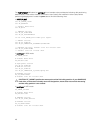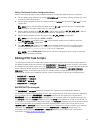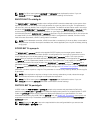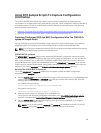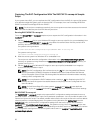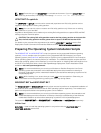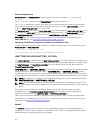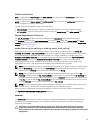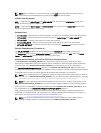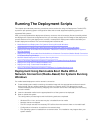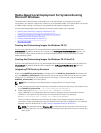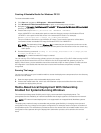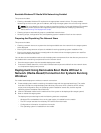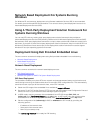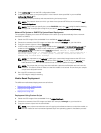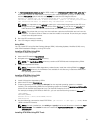
NOTE: While installing Linux, ensure that you install grub in the boot partition. Otherwise, you
cannot boot to the utility partition by pressing the <F10> key during reboot.
Utilities Used By suseinst
grub — Used with the kernel image and initial ramdisk files, along with the unattended answer file to
install the operating system in BIOS mode.
grub2 — Used with the kernel image and initial ramdisk files, along with the unattended answer file to
install the operating system in UEFI mode.
Variables Used
• DT_OS_DISK — Sets the disk on which to deploy the SUSE Linux Enterprise Server operating system.
• DT_OS_SRC — Sets the location from where to copy the kernel image and initial ramdisk files.
• DT_OS_PART — Sets the valid partition to install the grub files.
• DT_OS_IMG_PATH — Sets the network share where the operating system files are located.
• DT_SUSE_AUTOINST — Sets the network share from where the autoinst.xml file can be accessed.
External Dependencies Of suseinst.sh
The DT_PLATFORM variable is set during deployment by tkenvset.sh using platform discovery.
The suseinst.sh script uses the unattended answer file in conjunction with the grub utility and kernel
image and initial ramdisk files to install the operating system files.
autoinst.xml or autoinst_uefi.xml For SUSE Linux Enterprise Server
The autoinst.xml and autoinst_uefi.xml file is the default name of the answer file that you use to
automate an unattended SUSE Linux Enterprise Server installation in BIOS and UEFI modes respectively.
A sample copy of the autoinst.xml/autoinst_uefi.xml file is provided as part of DTK download in
the /opt/dell/toolkit/template/configs directory. The autoinst.xml/autoinst_uefi.xml file contains the
headings and parameters that instruct the installation utility to perform various configuration tasks. Before
a full deployment can be run, edit all appropriate headings and parameters, as necessary.
NOTE: After installing SUSE Linux Enterprise, change the login password by editing the user node of
the root user in
autoinst.xml/autoinst_uefi.xml. You can also encrypt the password file by changing
false to true in <encrypted config:type="boolean">false</encrypted>.
NOTE: See your operating system documentation for instructions on modifying the options in the
autoinst.xml/autoinst_uefi.xml file to customize the scripted installation of your operating system.
When you have completed all necessary modifications of the autoinst.xml/ autoinst_uefi.xml file, save
the completed file in the /opt/dell/toolkit/systems/<target system> directory.
After you have successfully edited your deployment scripts, you are ready to create the deployment
media and run the deployment. For instructions on creating the deployment media and running a full
deployment, see Deployment Using Dell Provided Embedded Linux .
NOTE: During an unattended SUSE Linux Enterprise Server installation, if the installer lists out
missing packages, delete the listed packages from autoinst.xml/autoinst_uefi.xml.
54



